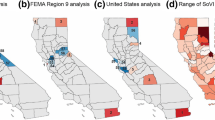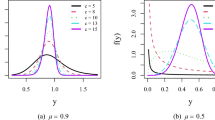Abstract
In transportation studies, variables of interest are often influenced by similar factors and have correlated latent terms (errors). In such cases, a seemingly unrelated regression (SUR) model is normally used. However, most studies ignore the potential temporal and spatial autocorrelations across observations, which may lead to inaccurate conclusions. In contrast, the SUR model proposed in this study also considers these correlations, making the model more behaviorally convincing and applicable to circumstances where a three-dimensional correlation exists, across time, space, and equations. An example of crash rates in Chinese cities is used. The results show that incorporation of spatial and temporal effects significantly improves the model. Moreover, investment in transportation infrastructure is estimated to have statistically significant effects on reducing severe crash rates, but with an elasticity of only −0.078. It is also observed that, while vehicle ownership is associated with higher per capita crash rates, elasticities for severe and non-severe crashes are just 0.13 and 0.18, respectively; much lower than one. The techniques illustrated in this study should contribute to future studies requiring multiple equations in the presence of temporal and spatial effects.



Similar content being viewed by others
Notes
A crash rate per unit VMT is meaningful in certain respects (primarily in cases where one is interested in roadway design and transport policy impacts on safety levels, given a particular level of VMT). However, the focus of this study is motorization’s effects on the safety and welfare of the Chinese population. Thus, crash rates or losses per capita are of primary interest.
An incidental parameters problem means that, for a fixed-effects model, when T is small, estimators of the constant terms do not converge, leading to inconsistent estimators of all coefficients. [See Lancaster (2000).]
A more formal translation is as follows: (1) Provincial capitals are capitals of autonomous regions and municipalities directly under the Central Government; (2) Big cities are those specifically designated in the State Plan, (3) Medium cities: are important at the regional level, and (4) Small cities are important at the county-level.
These two control variables are potentially endogenous, since higher crash rates may beget greater spending. However, this issue is beyond the scope of the article, and the methods proposed here are perfectly applicable to many situations.
Of course, a 500% increase in vehicle ownership is well outside the sample data range of values, so the model may not be appropriate for such extrapolation. This case is offered simply as an example.
References
Aarts, L., Schagen, I.: Driving speed and the risk of road crashes: A review. Accident Anal. Prev. 38(2), 215–24 (2006)
Anselin, L.: A test for spatial auto-correlation in seemingly unrelated regressions. Econ. Lett. 28(4), 335–41(1988)
Anselin, L.: Spatial Econometrics. http://www.csiss.org/learning_resources/content/papers/baltchap.pdf. Cited 10 May 2006 (1999)
Blincoe, L., Seay, A., Zaloshnja, E., Miller, T., Romano, E., Luchter, S., Sicer, R.: The economic impact of motor vehicle crashes, 2000. U.S. Department of Transportation, National Highway Traffic Safety Administration, Washington, DC (2002)
China Transportation Accident Online (CTAO): Transportation accident prevention and solutions. http://www.122cn.com/read_web.asp?ArticleID=1252.htm. Accessed 10 December 2006 (2005)
Cliff, A., Ord, J.K.: Testing for spatial autocorrelation among regrerssion residuals. Geogr. Anal. 4, 267–84 (1972)
Egger, P., Pfaffermayr, M.: Distance, trade and FDI: A Hausman-Taylor SUR approach. J. Appl. Econ. 19(2), 227–46 (2004)
Elhorst, J.P.: Specification and estimation of spatial panel data models. Int. Reg. Sci. Rev. 26(3), 244–68 (2003)
Federal Highway Administration (FHWA).: http://www.fhwa.dot.gov/policy/ohpi/hss/hsspubs.htm. Cited 5 May 2006 (2004)
Greene, W.H.: Econometric Analysis 5th edn., Prentice Hall, Upper Saddle River, New Jersy (2002)
Ivan, J.N.: New approach for including traffic volumes in crash rate analysis and forecasting. Trans. Res. Rec. 1897, 134–41 (2004)
Jin, L.: Value of life: No need to avoid the assessment. Chongqing Environ. Sci. 4, 47–52 (1999)
Kapoor, M., Kelejian, H.H., Prucha, I.R.: Panel data models with spatially correlated error components. http://www.isb.edu/faculty/Working_Papers_pdfs/Panel_Data_Models.pdf. Cited 10 May 2006 (2004)
Kim, E., Hewings, J.D.G., Hong, C.: An application of an integrated transport network-multiregional CGE model: A framework for the economic analysis of highway projects. Econ. Syst. Res. 16(3), 235–258 (2004)
Kweon, Y.J., Kockelman K.M.: Safety effects of speed limit changes: Use of panel models, including speed, use, and design variables. Trans. Res. Rec. 1908, 148–158 (2005)
Lancaster, T.: The incidental parameters problem since 1948. J. Econ. 95 (2), 391–414 (2000)
Lord, D., Manar, A., Vizioli, A.: Modeling crash-flow-density and crash-flow-V/C ratio relationships for rural and urban freeway segments. Accident Anal. Prev. 37(1), 185–199 (2005)
Magnus, J.R.: Multivariate error-components analysis of linear and non-linear regression-models by maximum-likelihood. J. Econ. 19(2–3), 239–285 (1982)
Ministry of Public Security of the People’s Republic of China. (MPS): Notice on revised classification of traffic accidents. http://www.szlaw.org/2004/6-14/16749.htm. Cited 10 May 2006 (1991)
Noland, R.B.: Relationships between highway capacity and induced vehicle travel. Trans. Res. 35A(1), 47–72 (2001)
Noland, R.B., Karlaftis, M.G.: Sensitivity of crash models to alternative specifications. Trans. Res. 41E(5), 439–58 (2005)
Persaud, B.N., Retting, R.A., Lyon, C.A.: Crash reduction following installation of centerline rumble strips on rural two-lane roads. Accident Anal. Prev. 36(6), 1073–1079 (2004)
Qin, L., Shao, C., Wang, Y.: Analysis of freeway traffic accidents in China. Proce. Conference Traffic Trans. Stud. ICTTS 4, 165–172 (2004)
Replogle, M.: Non-motorized vehicles in Asia: Lessons for sustainable transport planning and policy. http://www.environmentaldefense.org/documents/2293_NonmotorizedVehicles Asia. pdf. Cited 11 November 2006 (1991)
Schipper, L., Ng, W.S.: Rapid motorization in China: Environmental and social challenges. World Resources Institute, EMBARQ, ADB-JBIC-World Bank East Asia and Pacific Infrastructure Flagship Study (2004)
Srinivasan, S., Kockelman, K.: The impacts of bypasses on small- and medium-sized communities: An econometric analysis. J. Trans. Stat. 5(2), 57–69 (2002)
Su, J.: Status analysis and countermeasures of road traffic safety in China. Paper presented at International Road Safety Seminar, Beijing, China,18–20 October, (2005)
Washington, S., Metarko, J., Fomunung, I., Ross, R., Julian, F., Moran, E.: An inter-regional comparison: Fatal crashes in the southeastern and non-southeastern United States: Preliminary findings. Accident Anal. Prev. 31(1–2), 135–146 (1998)
Yi, P., Ran, B.: Streamlining Chinese highway accident data acquisition, communications, and analysis. Trans. Res. Rec. 1846, 31–8 (2003)
Zellner, A.: An efficient method of estimating seemingly unrelated regression equations and tests for aggregation bias. J. Am. Stat. Assoc. 57, 348–68 (1962)
Zhai, Z.: Cities’ security problem in China and its solving method Paper presented at International Road Safety Seminar, Beijing, China, 18–20 October, (2005)
Acknowledgments
The Benjamin H. Stevens Graduate Fellowship in Regional Science provided financial support for this study. The authors are grateful for the Institute of Transportation Engineering at Tsinghua University’s provision of data sets. Dr. Huapu Lu was generous in sharing data and resolving data issues. The authors also thank Annette Perrone for her administrative and editing assistance.
Author information
Authors and Affiliations
Corresponding author
Rights and permissions
About this article
Cite this article
Wang, X., Kockelman, K.M. Specification and estimation of a spatially and temporally autocorrelated seemingly unrelated regression model: application to crash rates in China. Transportation 34, 281–300 (2007). https://doi.org/10.1007/s11116-007-9117-9
Published:
Issue Date:
DOI: https://doi.org/10.1007/s11116-007-9117-9




